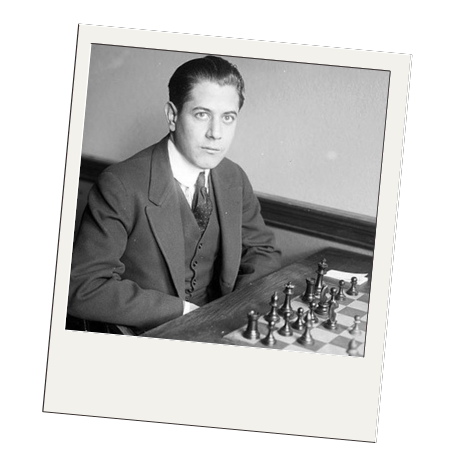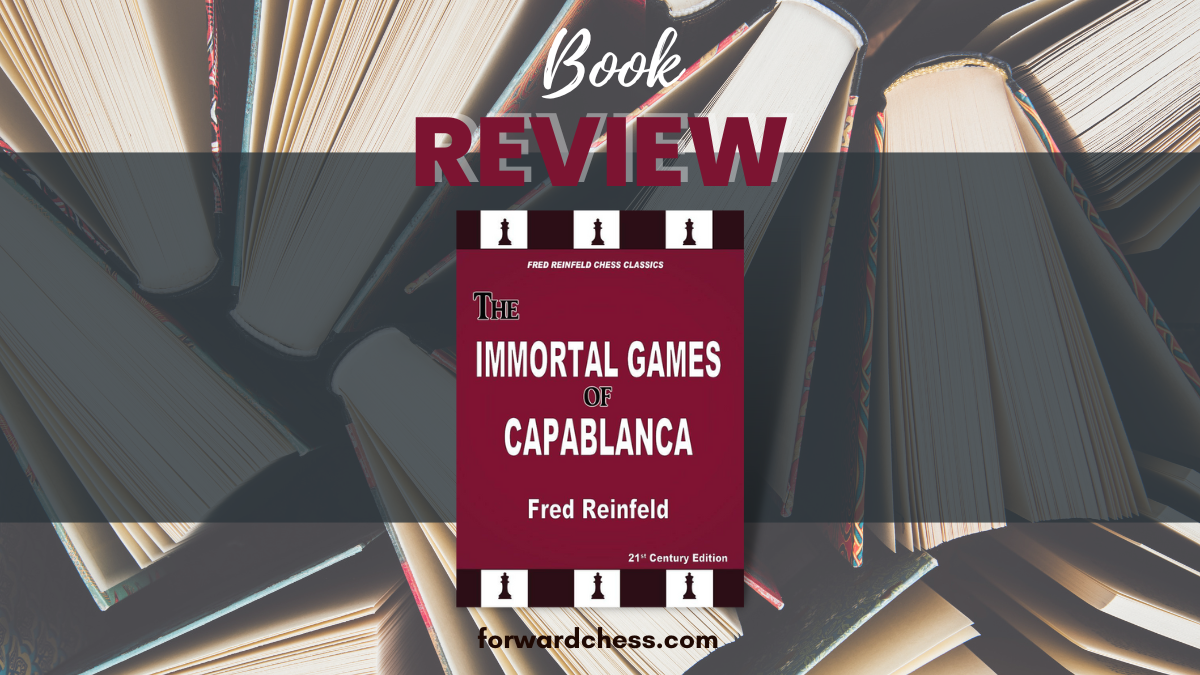Review of The Immortal Games of Capablanca
“I have known many chess players, but among them there has been only one genius – Capablanca!”
– Former World Champion, Emanuel Lasker.
At the peak of his career, former World Champion José Raúl Capablanca made chess look like a simple game, and he was thought to be invincible. Alexander Alekhine showed that this wasn’t the case in their epic 1927 World Champion match, but Capablanca’s reputation as a superb player and arguably the most naturally gifted player of all time remains.

GM John Nunn described Capablanca as follows.
“There was certainly no better player than Capablanca from whom to learn chess strategy. His natural talent created games of deceptive simplicity. Under the surface he may well have been calculating hard to work out exactly how to restrain his opponent’s potential counterplay, but this is not obvious when playing over the games – instead one has the impression of strategic plans effortlessly consummated.”
The late Fred Reinfeld wrote many chess books that were a staple diet of a generation of chess players who wanted to improve their game. He passed away in 1964, almost 60 years ago. Hence, all his books were written well before strong chess engines were developed. Many of his books have been reprinted by Dover Publications in essentially their original form. In more recent times, Russell Enterprises has been reissuing some of his books, with the original English descriptive notation converted to the now-standard algebraic notation.

The Immortal Games of Capablanca is one of these books to be reissued. It’s important to remember that the book was originally written in 1942 and it is thus a product of the time.
However, some of the original analysis has been corrected using the results of chess engines. These corrections are typically short, and they are inserted in the text at the appropriate places and don’t intrude too much on the main analysis.
Like his American counterpart, Irving Chernev, Reinfeld primarily wrote for amateurs, and this book is typical of his style. Hence, verbal commentary is mostly used to explain the games, and short analytical annotations are used to provide concrete evaluations. This is a sensible mix for a book aimed at non-master players.
The book contains 113 of Capablanca’s games that cover his entire career. The material is split into five parts that cover different periods, starting with his earliest games as a child prodigy and ending with his final games as an ex-world champion. Each part has an introduction to the games to place them in context. The book also includes some background to the games, a biography and Capablanca’s match and tournament record.
Two examples from the book are given below, with annotations from the book.
In conclusion, this is a welcome update of a classic book. As Nunn said, Capablanca is a superb role model for improving your chess skills, and this book is a good vehicle for doing this.
Have any thoughts or questions? Let us know in the comments below!
- New Release: Chess Analysis – Reloaded - March 9, 2024
- Review: The Art of The Endgame – Revised Edition - February 14, 2024
- Review: Study Chess with Matthew Sadler - December 13, 2023
